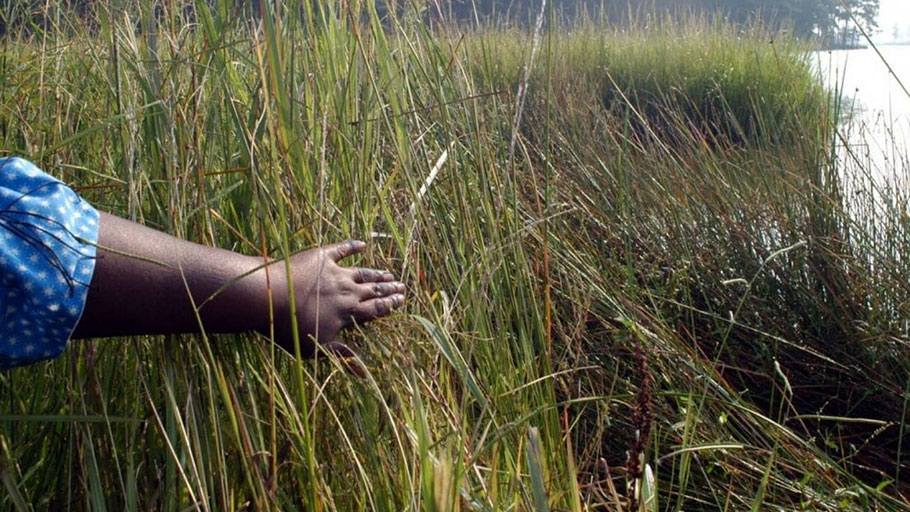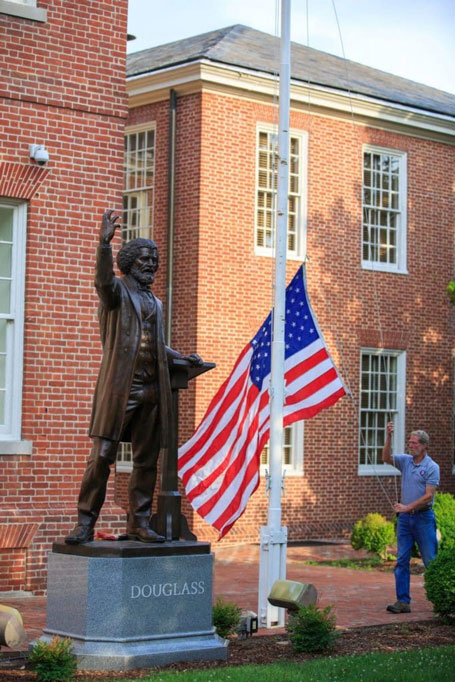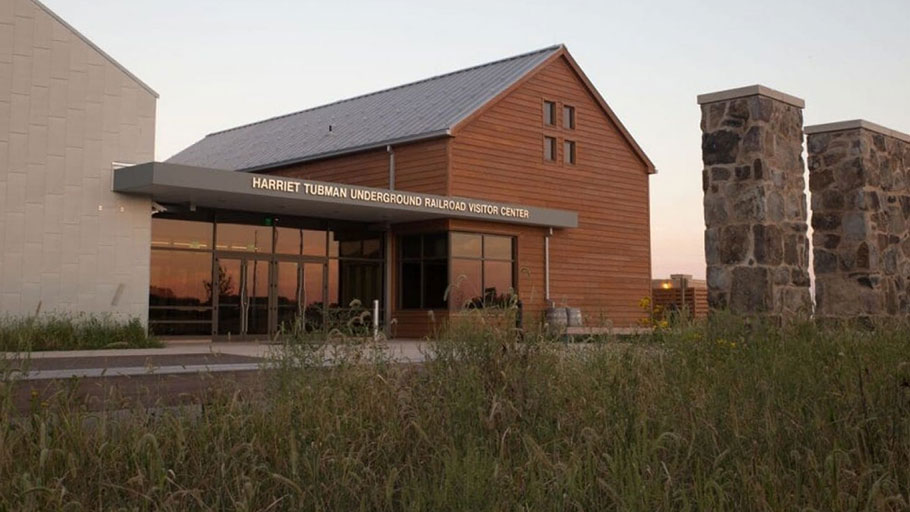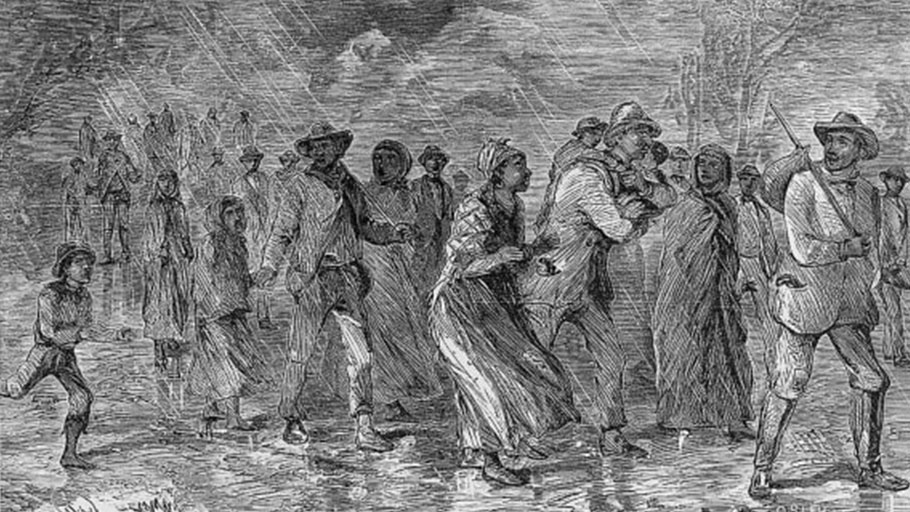Fugitives escaping the Eastern Shore of Maryland. (Source: Library of Congress)
By WP BrandStudio, The Washington Post —
Within just four years, Frederick Douglass and Harriet Tubman, two of America’s most influential and notable abolitionists, were born in close proximity on the Eastern Shore of Maryland. Douglass was born in 1818 in Talbot County; four years later, Tubman was born just a few miles south, in Dorchester County.
When it came to their approaches to abolitionism, the difference between them was “marked,” as Douglass himself once wrote. Douglass fought slavery and systemic racism out in the open, speaking to masses of people and chronicling the horrors of his youth in books and his abolitionist newspaper, The North Star. Tubman’s activism was more “under the radar,” says Dale Glenwood Green, Professor of Architecture and Historic Preservation at Morgan State University. Her work helping enslaved people escape was illegal and had to be more clandestine.
But they shared those same origins: endless miles of farmland, dense forests and swamp-like tidal marshes, having first imagined freedom on the edge of the Chesapeake Bay. And it was that region’s strong communities of free blacks and proximity to an extensive waterway that created the perfect landscape from which both Douglass and Tubman found their footing as leading abolitionists.
The Role of Free Black Communities
Unlike most other parts of the South, Maryland had a very strong community of free African Americans. The Eastern Shore, in particular, had more free blacks than just about any other slave-holding area in the nation. And it was the members of these communities who fostered a spirit of rebellion among Maryland’s African Americans, including Douglass and Tubman.
As early as 1788, free blacks in Talbot County formed The Hill Community in Easton; there, they purchased properties, established two African American churches and hired out their work to locals. By 1800, the area’s free black population hit an all-time high. More than a third of Dorchester County’s African American population, for instance, was free. Part of this had to do with the region’s high number of Quakers, who started freeing their slaves long before the Civil War ended and went on to be agents of the Underground Railroad.
The need for slave labor in the Eastern Shore also began to wane around this time. Soil depletion, agricultural expansion in the Deep South and other economic factors took a toll on many local farmers, who were forced to sell or free their slaves purely out of financial necessity; in turn, the region’s free black population continued to grow.
Over time, free blacks on the Eastern Shore started to form connections with still-enslaved people. This often happened while they were working. Maryland’s free blacks and enslaved people often labored side by side, particularly in the area’s booming maritime industry. Such proximity to free people — seeing them, hearing about their lives, day in and day out — was kerosene on the fire in the hearts of freedom seekers.
Marriages between free blacks and still-enslaved people were also not uncommon.
Douglass and Tubman both married freed blacks while they were still enslaved; Douglass’s wife, Anna Murray, was even instrumental in his escape from slavery. These marriages “created a certain dynamic of wanting to pursue freedom for the whole family,” says Kate Clifford Larson, historian and author of the Harriet Tubman biography Bound for the Promised Land. This was especially true for enslaved women who had children with freemen, since slavery was determined by matriarchal lineage — if your mother was a slave, you were, too, even if your father was free.
Like Murray, many of the region’s free blacks helped enslaved people escape to freedom. After achieving her own freedom, Harriet Tubman famously assisted freedom seekers on their way north — she returned to Dorchester County 13 times to help more than 70 people escape. And this was all done at great personal risk, Larson says. Free blacks caught working the Underground Railroad could be sold back into slavery, yet they did it anyway.
Proximity to Water
Maryland had something else that made freedom within reach of its enslaved population: vast, expansive waterways.
The Eastern Shore lies along the entire eastern side of the Chesapeake Bay — together, Dorchester and Talbot counties claim more than 2,300 miles of tidal shoreline. In the 19th century, Marylanders’ lives revolved around the water; they worked, traveled, lived and played on it. Fishing, oystering, shipping, and — up to a certain point — slave trading were all major pillars of the Maryland economy that were all dependent upon the Chesapeake and its tributaries.
And for those who were still enslaved on the Eastern Shore in the antebellum period, the water was a constant reminder of the freedom they didn’t have. In his autobiography, My Bondage and My Freedom, Douglass recalls looking out at the water behind the farm where he was enslaved, watching ships float by on the Chesapeake:
“There, with no audience but the Almighty, I would pour out my soul’s complaint: ‘You are freedom’s swift-winged angels, that fly round the world. I am confined in bands of iron!’…I will run away. I had as well be killed running as die standing.”

Looking over the marsh at the water (source: Dorchester County, Md.)
Many of those enslaved in Maryland used the water to escape from bondage. And the time they spent on the water and in the treacherous, marshy terrain of the Eastern Shore proved helpful on the Underground Railroad. When time came to traverse the harsh landscape on their way to freedom, they were ready.
Slave-holding states in the Deep South were hundreds of miles from freedom and had virtually no free blacks to speak of, so liberty didn’t seem so tangible to the enslaved population. But on the Eastern Shore, freedom was just in the line of sight for enslaved people, and some did what they needed to do to reach out and take it. By 1850, there were 279 recorded instances of people escaping slavery in Maryland, more than any other state in the nation.
Douglass’s and Tubman’s Lasting Impact
The deep connection between the Eastern Shore and its revolutionaries goes both ways. To this day, legacy of Douglass and Tubman can be found in every corner of the region. In the most literal sense, their families are alive and well across Dorchester and Talbot counties. Relatives of the two live throughout the Eastern Shore.

Frederick Douglas statue in Easton, Md.
The memories of their abolitionist actions also live on in the landscapes, landmarks and museums of the region. In Church Creek, Md., Tubman’s story is diligently preserved in the Harriet Tubman Underground Railroad Visitor Center, a comprehensive, immersive look at Tubman’s life. Since opening in March of 2017, the Center has seen nearly 150,000 visitors from around the globe, according to Angela Crenshaw, a Maryland State Park Ranger and the center’s assistant manager. And the center is just one of 36 stops on the Harriet Tubman Underground Railroad Byway, a guided driving tour of some of the most significant Tubman landmarks in the region. The Byway itself is supported by the Maryland Heritage Areas Authority, a local coalition that is dedicated to preserving and stimulating the area’s history and cultural through tourism.
In Talbot County, Frederick Douglass Day is celebrated in Easton each September, giving locals the chance to celebrate his life and legacy. Talbot County also broke ground on the Frederick Douglass Park on the Tuckahoe this year on Valentine’s Day, a date that corresponds with Douglass’s 200th birthday. The park’s 107-plus acres of undisturbed water, woods, and fields are just upstream from the farm where Douglass was born and look almost exactly as they would have when he was a boy. The planning process has begun to develop the park into a place that remains natural, but better tells the Douglass story. The park is but one of the stops on an extensive Frederick Douglass driving tour through the county.

Harriet Tubman Underground Railroad Visitors Center in Dorchester County, Md.
And other revolutionary legacies have made their mark on the area. Gloria Dandridge Richardson, famed Civil Rights activist, is from Cambridge, Md.; now 96 and living in New York, she still returns to her hometown from time to time. Abolitionists Henry Highland Garnet and William Still came from nearby regions, as well. Tubman and Douglass are the core from which radiates a tradition of revolution, activism, and the pursuit of justice.
“Both speak uniquely to our national history,” Green says. “When both of their narratives come forward, we have a true, complete, and fuller story of American history, and to have them in such close proximity makes it even more powerful.”














